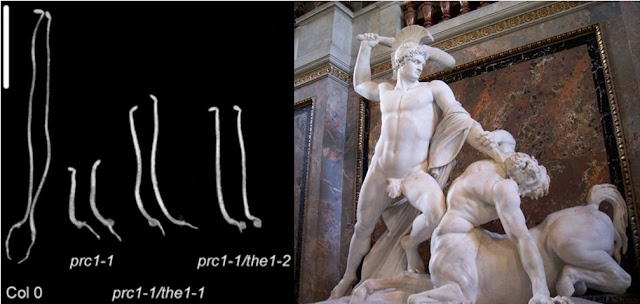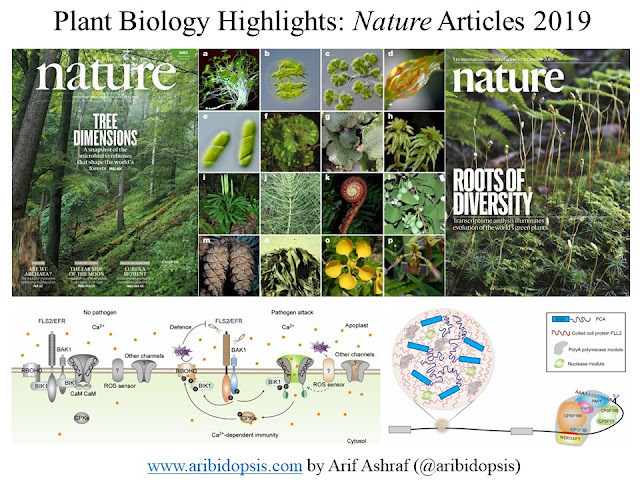Mutant Series: THESEUS (THE)
Plants have one unique component as a boundary, known as "cell wall". Alteration of the cell wall or its components demonstrates visible phenotype at the whole plant level. One of the major components of the cell wall is cellulose.
Cellulose-deficient mutant, such as procuste 1-1 (prc1-1), has short hypocotyl containing phenotype. prc1-1 has the defect in cellulose synthase catalytic subunit CESA6. But, it was not known how the short hypocotyl containing phenotype was developmentally coordinated. To understand that when chemical mutagenesis was introduced in the prc1-1 mutant background, 5 intermediate length hypocotyls (hypocotyl was between the wild-type and prc1-1) containing plants were picked up. Among these 5, the same gene was mutated into 2 cases. They named that gene THESEUS (THE). Theseus was the Greek mythical founder-hero of Athens and he slaughtered the rogue smith and bandit Procrustes. Here, in Arabidopsis, the short hypocotyl of pcr1-1 is also rescued by the mutation in Theseus.
Interestingly, The1 is broadly and prevalently expressed, especially in tissues where cells are expanding. However, none of the the1 mutations induce noticeable phenotypes in the wild-type background. Similarly, overexpression of THE1-GFP in the1 prc1-1 reversed or even enhanced the hypocotyl length but had no effect in wild-type seedlings. It sounds like that The1 intervention is required only under the turmoil condition.
References:





Comments
Post a Comment